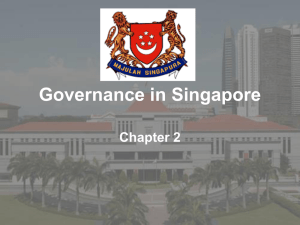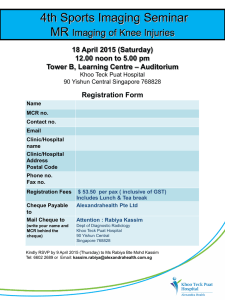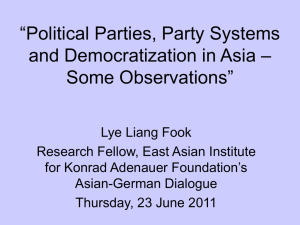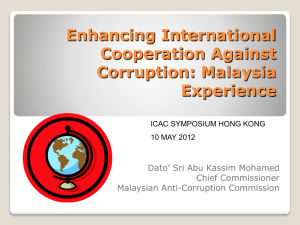Population - misssnghumanities
advertisement
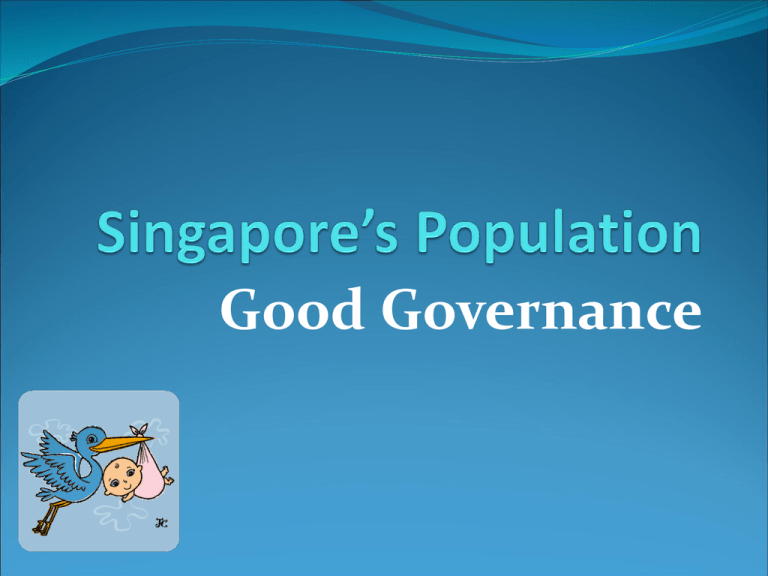
Good Governance Population Pyramid Population Pyramid Population Pyramid Singapore’s Population Policy From rapid-growth baby-boom figures during the 1950s and the 1960s to the … 1966 to 1981 three five-year plans to reduce population growth to the … Current struggle to bring up declining population levels and replacement rates and finding ways to … Handle current ageing population problems Singapore’s Population Policy Late 1950s to the 1960s: Post-war baby boom due to peace and stability in Singapore following WW2 as businesses were re-started and employment was abundant Confidence in the future and the belief that more children meant better financial security in old age With an average of 6 to 7 children or more per family, the population grew rapidly from 1.02m to 1.64m in a decade Singapore’s Population Policy Late 1950s to the 1960s: In 1965, Singapore became independent and was poised to face many challenges: British military pull-out scheduled for 1971 No raw materials Need to build up industry Need to build up schools Need to build up healthcare system Need to build up infrastructure Need to house a growing population What a BIG Headache!!! Solution? Singapore’s Population Policy 1966 to 1981 (Family Planning Phase) In 1966, setting up of the SFPPB (Singapore Family Planning and Population Board) to plan population policies with the aim to control population growth: Aimed for 3 Five Year Plans 1966 – Emphasize the need for smaller families 1971 – Encouraged married couples to stop at 2 children 1976 – Maintain the replacement level at 2.1 children Singapore’s Population Policy 1966 to 1981 (Family Planning Phase) In addition, various measures to assist the 5 year plans were put in place: Encouraging contraception and making it available for purchase Legalised abortion Campaigns Singapore’s Population Policy 1966 to 1981 (Family Planning Phase) In addition, various measures to assist the 5 year plans were put in place: No paid maternity leave to be given to the 3rd and subsequent children No priority to be given to large families in the allocating of government (HDB) flats No income tax relief to be given for the 4th and subsequent children Delivery charges in hospitals to be increased with each additional child Singapore’s Population Policy 1966 to 1981 (Family Planning Phase) Was extremely successful: 1980 – Fertility rate was 1.82 per woman Family planning policy to reduce birth rate had worked Was not that successful: Fertility rate was below replacement level Other factors at play for a decrease in births: Increasing living costs Change of mindsets towards career, marriage and large families Singapore’s Population Policy To what extent were Singapore’s Family Planning policies a success? Explain your answer. [12m] Step 1: Explain that they were successful 1980 – Fertility rate was 1.82 per woman Family planning policy to reduce birth rate had worked Step 2: Explain that they were not that successful Fertility rate was below replacement level Other factors at play for a decrease in births: Increasing living costs Change of mindsets towards career, marriage and large families Step 3: Weighing Singapore’s Population Policy 1980s and beyond (Declining Birth Rate) Why was there a need to promote population growth from the 1980s? Declining Birth Rate from the 1980s Unattractive to MNCs (Multi-National Companies) Ageing Population Defence Needs Singapore’s Population Policy 1980s and beyond (Declining Birth Rate) Why was there a need to promote population growth from the 1980s? Declining Birth Rate from the 1980s Fertility rate was at 1.82 (below replacement rate) Rising cost of living Changing Attitudes: Higher educational prospects for women resulted in them marrying later and focusing on their careers Young couples want time together and decide on having children later Changing attitudes towards marriage and large families Dragon Year versus unpopular years Economic uncertainties Singapore’s Population Policy 1980s and beyond (Declining Birth Rate) Why was there a need to promote population growth from the 1980s? Unattractive to MNCs Not enough talented people to work in MNCs and sustain their development in Singapore More expensive to recruit Singaporeans because of short supply and therefore MNCs may move to cheaper hiring destinations like India and China where the labour market is bigger Singaporeans would also become a less attractive consumer market Singapore’s Population Policy 1980s and beyond (Declining Birth Rate) Why was there a need to promote population growth from the 1980s? Ageing Population Fewer births mean fewer young people in future population figures to counter the large amount of older people from the baby boom period More resources would be needed to take care of the ageing population and less resources would be available for other sectors Singapore’s Population Policy 1980s and beyond (Declining Birth Rate) Why was there a need to promote population growth from the 1980s? Defence With fewer young people, there would be less men to serve the nation Singapore would be weakened in terms of defence capability Move towards Army 3G to counter a drop in human resources Singapore’s Population Policy 1980s and beyond (Declining Birth Rate) How did the government promote population growth after the 1980s? Graduate Mothers Scheme Three or More if You Can Afford It Other Pro-Family Measures Attracting Foreign Talent Singapore’s Population Policy 1980s and beyond (Declining Birth Rate) How did the government promote population growth after the 1980s? Graduate Mothers Scheme Research undertaken showed that the children of university graduates tended to perform better in schools As a result, PM Lee (LKY) felt that female graduates should have more children so that the new generation workforce would be better educated Singapore’s Population Policy 1980s and beyond (Declining Birth Rate) How did the government promote population growth after the 1980s? Graduate Mothers Scheme In 1984, the GMS was introduced to encourage marriages among graduates and to encourage them to have more children GMS sparked off a debate and unhappiness because nongraduates were unhappy as they were neglected under the policy The GMS was scrapped in 1985 Singapore’s Population Policy 1980s and beyond (Declining Birth Rate) How did the government promote population growth after the 1980s? Three or More if You Can Afford It Amendment of the 1987 population policy and aimed to bring back the replacement level of 2.1 children Instead of discouraging large families, parents were encouraged to have three or more children if they could afford it Singapore’s Population Policy 1980s and beyond (Declining Birth Rate) How did the government promote population growth after the 1980s? Three or More if You Can Afford It Due to the 1985 recession and the retrenchment of workers by MNCs, the government also wanted couples to only have children if they could afford it and not contribute to social problems if they were to have another child and not be able to cope financially Singapore’s Population Policy 1980s and beyond (Declining Birth Rate) How did the government promote population growth after the 1980s? Three or More if You Can Afford It The government also introduced measures like allowing the use of Medisave to pay for the deliveries of the first 3 children LIMITED SUCCESS Fertility rate rose from 1.48 to 1.96 in 1988 From 1988 fell from 1.96 to 1.24 in 2004 Singapore’s Population Policy 1980s and beyond (Declining Birth Rate) How did the government promote population growth after the 1980s? Three or More if You Can Afford It Publicity campaigns also failed to inspire couples to have more than one child Later marriages Lowest birth rate Singapore’s Population Policy 1980s and beyond (Declining Birth Rate) How did the government promote population growth after the 1980s? Other Pro-Family Measures To help with the high cost of raising children and the lack of suitable childcare facilities: Equalised medical benefits – Mothers could now make claims for their children 5-day work week – To allow for a better work-life balance Singapore’s Population Policy 1980s and beyond (Declining Birth Rate) How did the government promote population growth after the 1980s? Other Pro-Family Measures To help with the high cost of raising children and the lack of suitable childcare facilities: Grandparent Caregiver Relief – Tax relief for grandparents who took care of children Extended paid maternity leave – (from 8 weeks to 12 weeks) Singapore’s Population Policy 1980s and beyond (Declining Birth Rate) How did the government promote population growth after the 1980s? Attracting Foreign Talent Enhance Singapore’s competitiveness Relaxed immigration policy from 1989 making it easier to obtain Singapore citizenship Subsidised housing Attractive education packages for children Singapore’s Population Policy Ageing Population Singapore’s population will age quickly over the next 30 years because: Post-war baby boomers will hit 65 in 2030 … Declining birth rate from the 1980s … proportion of young working adults is shrinking and proportion of elderly is increasing Increased standard of living and better healthcare … Singaporeans live longer I don’t want to be BORN… Go Away! Singapore’s Population Policy Ageing Population An ageing population will affect Singapore in the following ways: Greater demand for healthcare and social services Smaller defence forces Strain on the working population Less competitive against other developing countries Singapore’s Population Policy Measures taken to deal with an Ageing Population: Senior Citizens as Assets to Society “Many Helping Hands” Approach Individual Family Community Government Singapore’s Population Policy Measures taken to deal with an Ageing Population: Senior Citizens as Assets to Society Valuable knowledge, skills, work experience and talent They can still contribute to public and private organisations and family life Singapore’s Population Policy Measures taken to deal with an Ageing Population: “Many Helping Hands” Approach Sharing of responsibility to take care of senior citizens and cutting down on government’s burden Singapore’s Population Policy Measures taken to deal with an Ageing Population: “Many Helping Hands” Approach Individual Healthy lifestyle (to reduce medical expenditure) Financial planning for retirement Singapore’s Population Policy Measures taken to deal with an Ageing Population: “Many Helping Hands” Approach Family Support Emotional, Social and Financial support Strengthen family bonds Annual Senior Citizens’ Week – Encourage the elderly to stay active, promote a positive attitude towards ageing Singapore’s Population Policy Measures taken to deal with an Ageing Population: “Many Helping Hands” Approach Family Support Grandparents’ Day to bring families together and show appreciation for the elderly Singapore’s Population Policy Measures taken to deal with an Ageing Population: “Many Helping Hands” Approach Community Help Government gives subsidies to voluntary welfare organisations to run communitybased services for the elderly: free health checks, befriender services, recreational activities Singapore’s Population Policy Measures taken to deal with an Ageing Population: “Many Helping Hands” Approach Government Support Laws and measures to protect the rights and interests of the elderly Tribunal for the Maintenance of Parents Tax Relief CPF Public Housing Schemes Potential Essay Question To what extent is the government responsible for preparing the country for an ageing population? Explain your answer. [12m] L3 – Explain what the government does to prepare the country for an ageing population L4 – Explain what others do to prepare the country for an ageing population (Individual, Family, Community) L5 – Weigh extent to which the government prepares the country for an ageing population versus what others do
